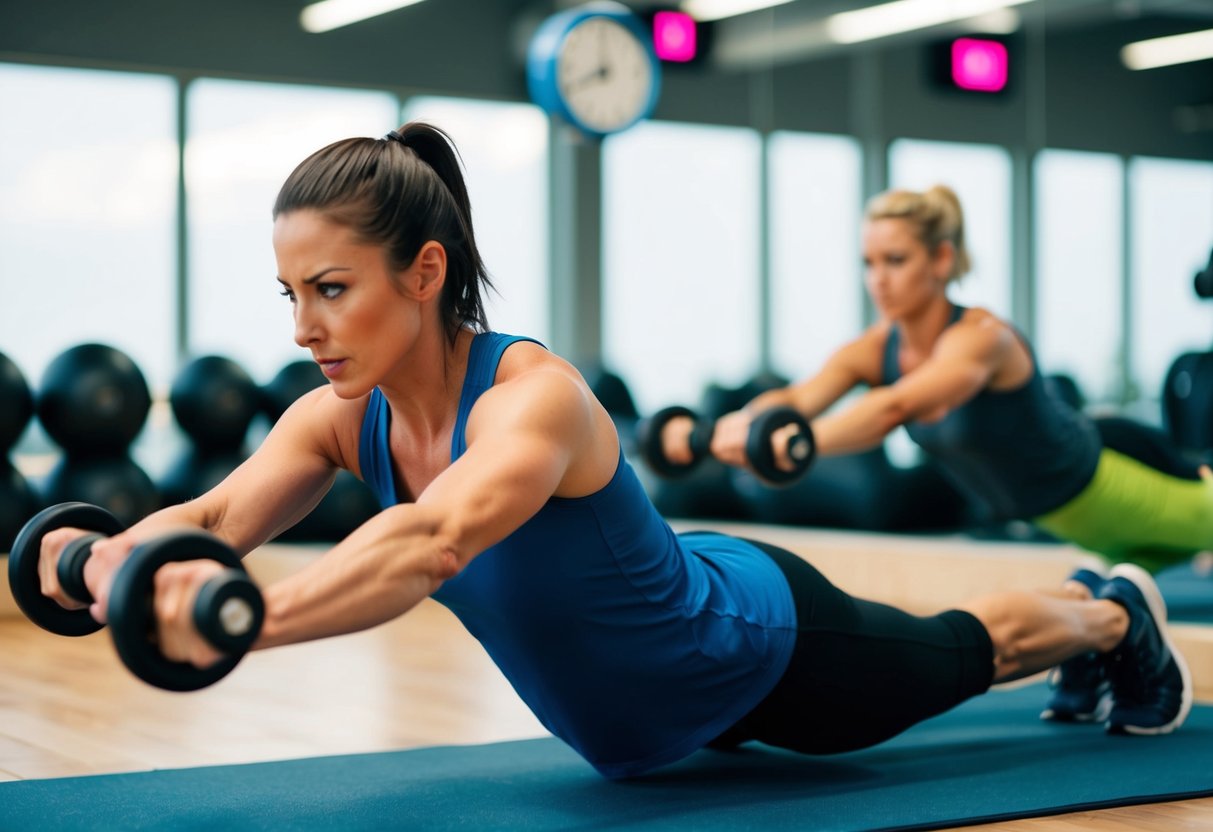
Creating a Sustainable HIIT Routine
Establishing a consistent HIIT routine requires balancing variety, scheduling workouts, and considering lifestyle adjustments. This involves a commitment to regular practice, integrating diverse exercises, and ensuring the routine fits seamlessly into daily life.
Consistency and Variety in Workouts
Consistency serves as the foundation of any effective HIIT routine. Individuals should aim to complete sessions at least three times a week. Sticking to a regular schedule helps in building endurance and reaping the full benefits of high-intensity training.
Variety is equally important to avoid plateauing and maintain motivation. Including different cardio exercises like sprinting, cycling, and jumping jacks keeps workouts engaging and challenges different muscle groups. Active recovery days featuring light activities such as walking or yoga can also be beneficial to allow the body to rest while maintaining momentum.
Building a HIIT Schedule
Building a HIIT schedule involves strategic planning to fit workouts into daily life. Identifying specific times each week for HIIT sessions ensures routine adherence. It might be useful to start with shorter sessions, such as 15-20 minutes, particularly for beginners.
Progression is key. Gradually increasing session duration or intensity helps to enhance fitness levels without overwhelming the body. Including warm-up and cool-down phases is essential to prepare the body for intense activity and aid in recovery. Timely scheduling and structured workouts are critical in creating an effective and sustainable HIIT routine.
Lifestyle Considerations and Adjustments
Incorporating HIIT into a busy lifestyle requires mindful adjustments. Prioritizing these workouts means allocating time while ensuring balance with daily commitments. Evaluating energy levels at different times of the day can help in choosing optimal workout slots.
Nutrition plays a crucial role; a balanced diet provides necessary fuel for high-intensity sessions. Prioritizing hydration and recovery, including sufficient sleep, is also vital for maintaining long-term routine sustainability. Personal preferences and individual fitness goals should guide routine customization to make HIIT a consistent part of a healthy lifestyle.
Advanced HIIT Strategies for Experienced Individuals
For those with a strong HIIT foundation, amplifying the intensity can lead to further gains. Focusing on advanced techniques like Tabata protocols, mature HIIT practitioners can heighten both core strength and cardiovascular fitness, incorporating sophisticated movements to better challenge their routines.
Tabata and Other Intense Protocols
Tabata, originating from Japan, is a high-intensity workout consisting of short bursts. It typically involves four-minute rounds with 20 seconds of maximum effort followed by 10 seconds of rest, repeated eight times. This method pushes limits by demanding peak performance in brief intervals, effectively increasing both aerobic and anaerobic capacity.
Other intense protocol variations include the Little Method and Turbulence Training, each offering unique structures to prevent plateau. By accelerating heart rate rapidly, these approaches help burn calories efficiently while improving stamina. Enthusiasts can optimize performance by blending these with traditional HIIT intervals. Professionals harness these strategies to mimic bodybuilder training regimens without the bulk, maintaining lean muscle while boosting endurance.
Challenging Core and Cardio Workouts
Intense HIIT for seasoned athletes ensures a robust focus on core strength and cardiovascular workouts. Exercises like Russian twists, plank variations, and mountain climbers can intensify core engagement, enhancing stability and strength. When combined with high-octane activities like burpees or jumping lunges, individuals experience a comprehensive workout that targets multiple muscle groups.
These routines are ideal for maximizing calorie burn and improving cardiovascular health. Increased difficulty keeps workouts not just taxing, but also stimulating, fostering further progress. Skilled athletes may alternate between complex exercises to keep routines fresh and challenging. Cross-training with sprints or cycling can complement the workout, adding diversity while supporting cardiovascular gains.
Incorporating Advanced Movements
Advanced practitioners incorporate complex movements to engage muscles deeply. Plyometric drills, such as box jumps and tuck jumps, elevate explosive power, fostering agility and speed. Integrating equipment like kettlebells or medicine balls can add resistance, intensifying workouts further.
Combining movements, such as squat thrusts or inchworms, demands coordination and promotes full-body conditioning. These elements make workouts less predictable and more engaging, critical for those familiar with standard routines. Including elements from disciplines like martial arts, such as high kicks or punch combinations, can enhance workout versatility. This variety caters to experienced individuals seeking to refine their HIIT practice, elevating both physical conditioning and technique.



